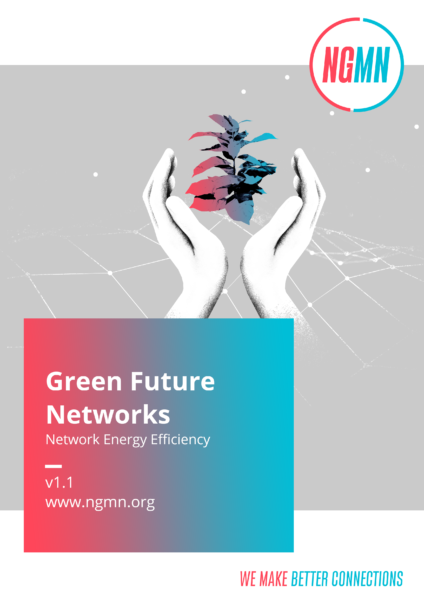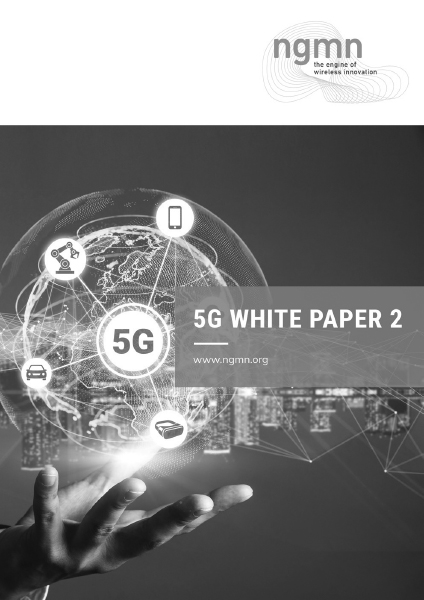Frankfurt, Germany – The Next Generation Mobile Networks (NGMN) Alliance published its second 5G White Paper and has launched further projects based on its conclusions.
After the highly recognised NGMN 5G White Paper published in 2015, the NGMN Alliance followed up with another leading message to the mobile industry demonstrating how NGMN continues to drive the ecosystem forward.
Whilst initial 5G services have been launched, there is much more underway to realise the full potential of 5G. The NGMN White Paper lays out how 5G is expected to increasingly enable new business models and many new use cases, and gives its recommendation on how to realise the full benefits of virtualisation, cloud, edge computing and more.
One of the obvious conclusions is, that the industry must avoid fragmentation by adopting global standards with open, interoperable interfaces and application programming interfaces, thereby delivering the promise of agility and scalability.
Some of the key elements the 5G White Paper 2 highlights are:
- A common Operator platform architecture is desired in order to allow edge computing to be used on a global scale.
- Mobile Network Operators are uniquely placed to provide a fully integrated solution for Verticals that encompasses networks, clouds and platforms, with dynamic customisation, partnerships, end-to-end management, carrier-grade security and efficient spectrum use. Mobile Network Operators and Verticals should increase their engagement to develop meaningful, mutually-beneficial partnerships and business models in order to fully deliver the 5G potential.
- Increased focus needs to be given to further improving energy efficiency, sustainability, social wellbeing, trust, and to digital inclusion.
Drawing on some of the challenges and actions identified in the White Paper, the NGMN Alliance recently launched two projects: Future Networks Cloud Native Platform, to create a holistic view on how network cloudification should be exploited, and Future Green Networks, to drive energy efficiency and carbon footprint reduction.
Nick Sampson, Director, Wireless Access and Core Network Standardisation, Orange, and co-editor of the White Paper, mentions: “Building on NGMN’s first 5G White Paper, this document emphasises key actions to support the continuing delivery of the 5G promise, in terms of enabling new business models and opportunities, and achieving the required agility to meet a myriad of requirements from existing and new users.”
Javan Erfanian, Distinguished Member of Technical Staff, Bell Canada, and co-editor of this White Paper indicates: “Following our 5G launch, we are pleased to continue working with the global industry and the entire ecosystem to drive and realise the full 5G vision for the benefit of all our customers. The NGMN White Paper 2 targets the next phase in this journey both to outline key requirements and success factors, including the new and extended value created and delivered by the mobile network operators working together with a broad partner ecosystem.”
“The 5G White Paper 2 provides a guideline for the 5G evolution with new visions, new use cases and new challenges. Engagement with Verticals is identified and highlighted to fully realise the NGMN’s 5G vision. This document further describes the unique and expanded role of the mobile network operator as a network and services provider. It is worthy of being the reference for producing 5G specifications and promoting the 5G ecosystem,” says Nan Hu, Lead Researcher and Manager of 5G Standardisation, China Mobile Research Institute, China Mobile, and third co-editor of the White Paper.
Anita Döhler, CEO, NGMN, points out: “The NGMN White Paper 2 describes the 5G objective of enabling and contributing to prosperity and productivity with significant energy and resource efficiency, sustainability, social wellbeing, trust and inclusion and promotes the engagement with the wider ecosystem to fully address the 5G outreach. I would like to thank everyone who worked on this position paper, which is a very valuable asset for the overall industry. As stated above, our White Paper kicked off several new activities already. This is an exciting time to be joining the NGMN Alliance and I look forward to continuing on the journey to 5G success and beyond.”


